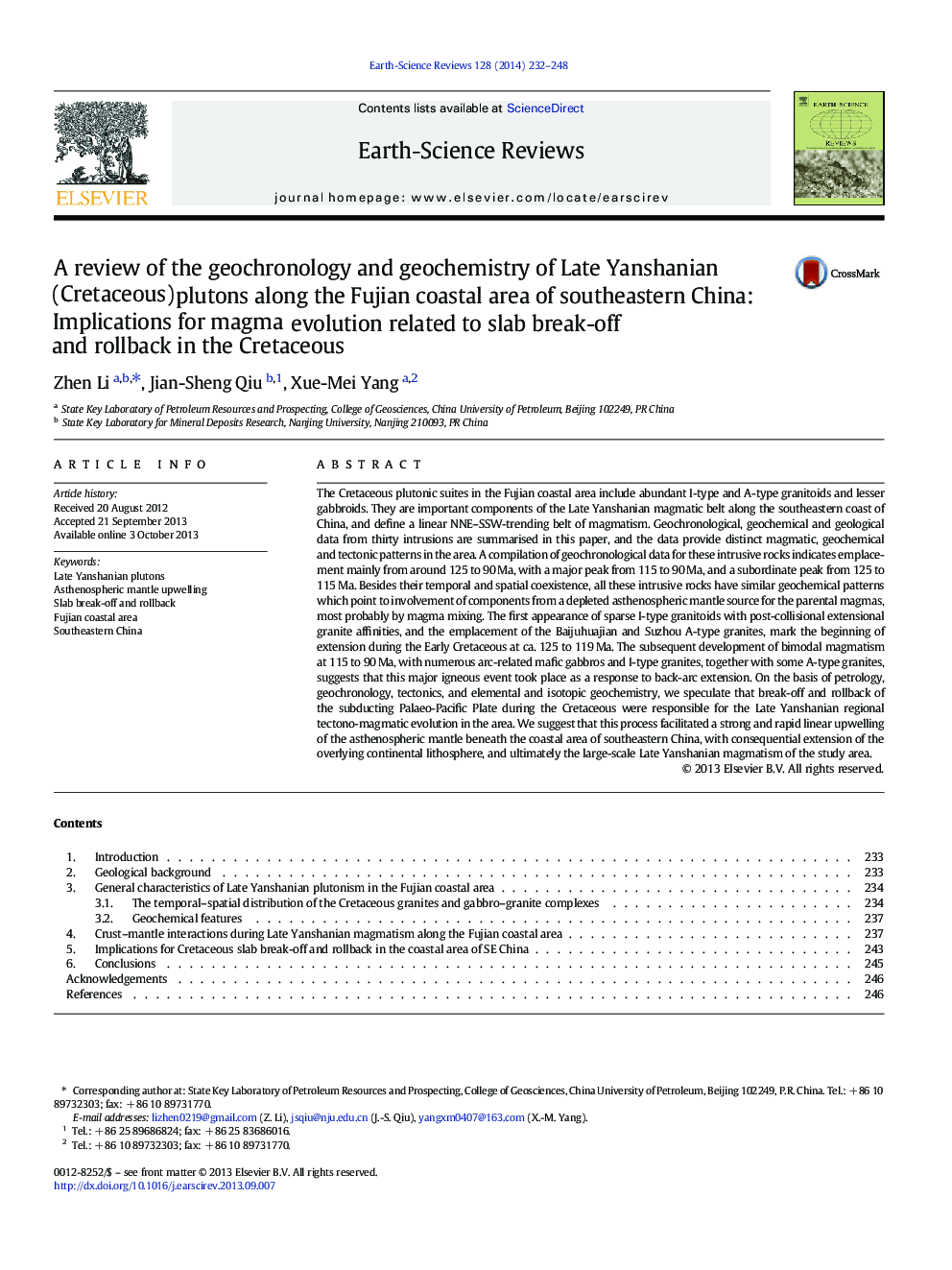| کد مقاله | کد نشریه | سال انتشار | مقاله انگلیسی | نسخه تمام متن |
|---|---|---|---|---|
| 4725807 | 1639974 | 2014 | 17 صفحه PDF | دانلود رایگان |
The Cretaceous plutonic suites in the Fujian coastal area include abundant I-type and A-type granitoids and lesser gabbroids. They are important components of the Late Yanshanian magmatic belt along the southeastern coast of China, and define a linear NNE–SSW-trending belt of magmatism. Geochronological, geochemical and geological data from thirty intrusions are summarised in this paper, and the data provide distinct magmatic, geochemical and tectonic patterns in the area. A compilation of geochronological data for these intrusive rocks indicates emplacement mainly from around 125 to 90 Ma, with a major peak from 115 to 90 Ma, and a subordinate peak from 125 to 115 Ma. Besides their temporal and spatial coexistence, all these intrusive rocks have similar geochemical patterns which point to involvement of components from a depleted asthenospheric mantle source for the parental magmas, most probably by magma mixing. The first appearance of sparse I-type granitoids with post-collisional extensional granite affinities, and the emplacement of the Baijuhuajian and Suzhou A-type granites, mark the beginning of extension during the Early Cretaceous at ca. 125 to 119 Ma. The subsequent development of bimodal magmatism at 115 to 90 Ma, with numerous arc-related mafic gabbros and I-type granites, together with some A-type granites, suggests that this major igneous event took place as a response to back-arc extension. On the basis of petrology, geochronology, tectonics, and elemental and isotopic geochemistry, we speculate that break-off and rollback of the subducting Palaeo-Pacific Plate during the Cretaceous were responsible for the Late Yanshanian regional tectono-magmatic evolution in the area. We suggest that this process facilitated a strong and rapid linear upwelling of the asthenospheric mantle beneath the coastal area of southeastern China, with consequential extension of the overlying continental lithosphere, and ultimately the large-scale Late Yanshanian magmatism of the study area.
Journal: Earth-Science Reviews - Volume 128, January 2014, Pages 232–248
